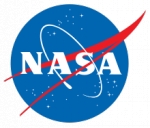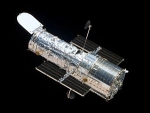Displaying items by tag: Hubble (space observatory)
AURA
The Association of Universities for Research in Astronomy (AURA) is a consortium of universities and other institutions that operates astronomical observatories and telescopes. AURA recognizes its mission statement as "To promote excellence in astronomical research by providing access to state-of-the-art facilities".
Founded October 10, 1957 with the encouragement of the National Science Foundation (NSF), AURA was incorporated by a group of seven U.S. universities: California, Chicago, Harvard, Indiana, Michigan, Ohio State, and Wisconsin.
AURA began as a small organization dedicated to ground-based optical astronomy, managing a range of 1- to 4-meter telescopes and providing community advocacy for optical/infrared astronomy. Over the years, AURA expanded its focus to include Solar Astronomy and the Gemini 8-meter telescopes, going on to partner with other consortia such as WIYN (Wisconsin Indiana Yale & NOAO) and SOAR (Southern Astrophysical Research). In the 1980s, AURA took on the management of the Space Telescope Science Institute, opening up the ultraviolet, optical, and infrared wavelength bands in space with the Hubble Space Telescope. AURA is furthering its aims in infrared space astronomy through the James Webb Space Telescope (JWST).
The organization is responsible for the operation of several important observatories, known as "AURA centers":
- the Gemini Observatory;
- the National Optical Astronomy Observatory (NOAO);
- the National Solar Observatory (NSO);
- the Space Telescope Science Institute (STScI);
- and the AURA Observatory (AURA-O).
Space Telescope Science Institute
The Space Telescope Science Institute (STScI) is the science operations center for the Hubble Space Telescope (HST; in orbit since 1990) and for the James Webb Space Telescope (JWST; scheduled to be launched in 2018).
STScI is located on the Johns Hopkins University Homewood campus in Baltimore, Maryland and was established in 1981 as a community-based science center that is operated for NASA by the Association of Universities for Research in Astronomy (AURA). In addition to performing continuing science operations of HST and preparing for scientific exploration with JWST, STScI manages and operates the Multi-mission Archive at Space Telescope (MAST), the Data Management Center for the Kepler mission and a number of other activities benefiting from its expertise in and infrastructure for supporting the operations of space-based astronomical observatories. Most of the funding for STScI activities comes from contracts with NASA's Goddard Space Flight Center but there are smaller activities funded by NASA's Ames Research Center, NASA’s Jet Propulsion Laboratory, and the European Space Agency (ESA).
The staff at STScI consists of scientists (mostly astronomers and astrophysicists), software engineers, data management and telescope operations personnel, education and public outreach experts, and administrative and business support personnel.
NASA - Goddard Space Flight Center (GSFC)
The Goddard Space Flight Center (GSFC) is a major NASA space research laboratory established on May 1, 1959 as NASA's first space flight center. GSFC employs approximately 10,000 civil servants and contractors, and is located approximately 6.5 miles (10.5 km) northeast of Washington, D.C. in Greenbelt, Maryland, USA. GSFC, one of ten major NASA field centers, is named in recognition of Dr. Robert H. Goddard (1882–1945), the pioneer of modern rocket propulsion in the United States.
GSFC is the largest combined organization of scientists and engineers in the United States dedicated to increasing knowledge of the Earth, the Solar System, and the Universe via observations from space. GSFC is a major U.S. laboratory for developing and operating unmanned scientific spacecraft. GSFC conducts scientific investigation, development and operation of space systems, and development of related technologies. Goddard scientists can develop and support a mission, and Goddard engineers and technicians can design and build the spacecraft for that mission. Goddard scientist John C. Mather shared the 2006 Nobel Prize in Physics for his work on COBE.
GSFC also operates two spaceflight tracking and data acquisition networks (the Space Network and the Near Earth Network), develops and maintains advanced space and Earth science data information systems, and develops satellite systems for the National Oceanic and Atmospheric Administration (NOAA).
GSFC manages operations for many NASA and international missions including the Hubble Space Telescope (HST), the Explorer program, the Discovery Program, the Earth Observing System (EOS), INTEGRAL, the Solar and Heliospheric Observatory (SOHO), the Rossi X-ray Timing Explorer (RXTE) and Swift. Past missions managed by GSFC include the Compton Gamma Ray Observatory, SMM, COBE, IUE, and ROSAT. Typically, unmanned earth observation missions and observatories in Earth orbit are managed by GSFC, while unmanned planetary missions are managed by the Jet Propulsion Laboratory (JPL) in Pasadena, California.
Hubble Space Telescope
The Hubble Space Telescope (HST) is a space telescope that was carried into orbit by a Space Shuttle in 1990 and remains in operation. A 2.4 meter (7.9 ft) aperture telescope in low Earth orbit, Hubble's four main instruments observe in the near ultraviolet, visible, and near infrared. The telescope is named after the astronomer Edwin Hubble.
Hubble's orbit outside the distortion of Earth's atmosphere allows it to take extremely sharp images with almost no background light. Hubble's Ultra-Deep Field image, for instance, is the most detailed visible-light image ever made of the universe's most distant objects. Many Hubble observations have led to breakthroughs in astrophysics, such as accurately determining the rate of expansion of the universe.
Although not the first space telescope, Hubble is one of the largest and most versatile, and is well known as both a vital research tool and a public relations boon for astronomy. The HST was built by the United States space agency NASA, with contributions from the European Space Agency, and is operated by the Space Telescope Science Institute. The HST is one of NASA's Great Observatories, along with the Compton Gamma Ray Observatory, the Chandra X-ray Observatory, and the Spitzer Space Telescope.
Space telescopes were proposed as early as 1923. Hubble was funded in the 1970s, with a proposed launch in 1983, but the project was beset by technical delays, budget problems, and the Challenger disaster. When finally launched in 1990, scientists found that the main mirror had been ground incorrectly, significantly compromising the telescope's capabilities. However, after a servicing mission in 1993, the telescope was restored to its intended quality.
Hubble is the only telescope designed to be serviced in space by astronauts. Between 1993 and 2002, four missions repaired, upgraded, and replaced systems on the telescope, but a fifth mission was canceled on safety grounds following the Columbia disaster. However, after spirited public discussion, NASA administrator Mike Griffin approved one final servicing mission, completed in 2009. The telescope is now expected to function until at least 2014. Its scientific successor, the James Webb Space Telescope (JWST), is to be launched in 2018 or possibly later.




